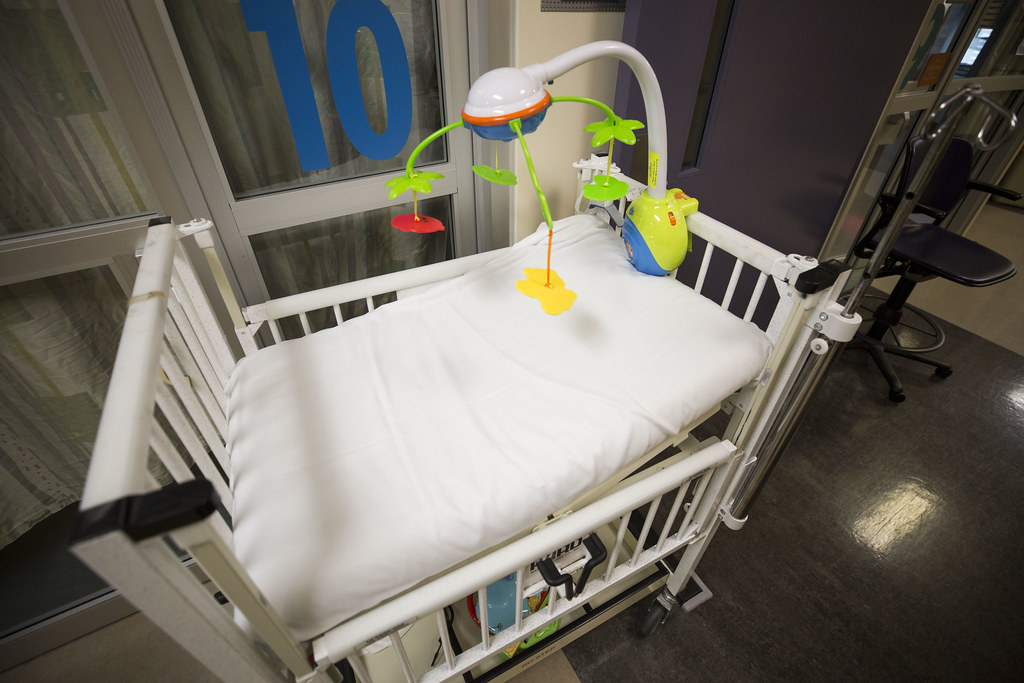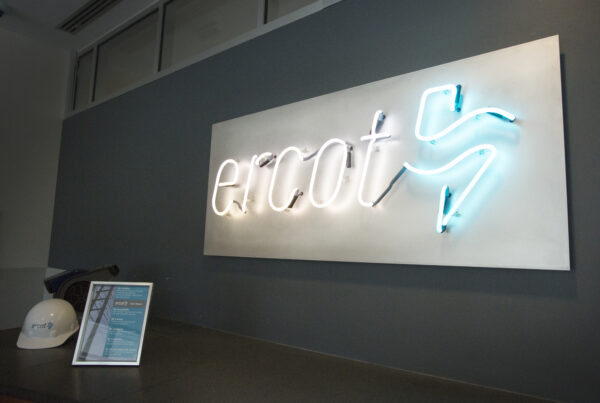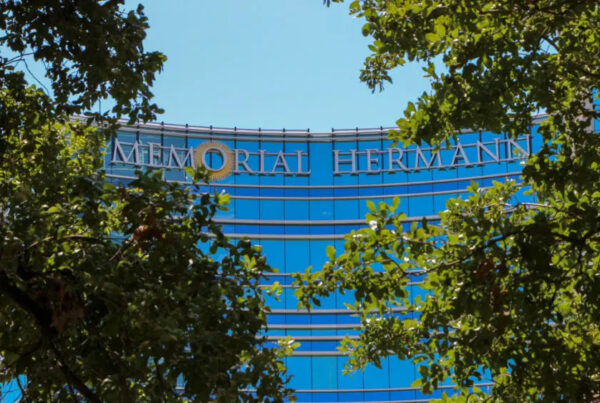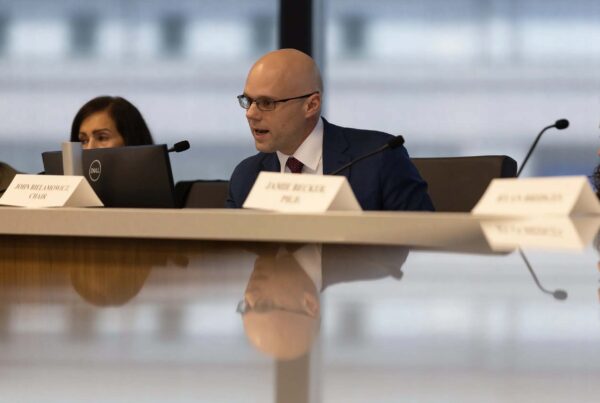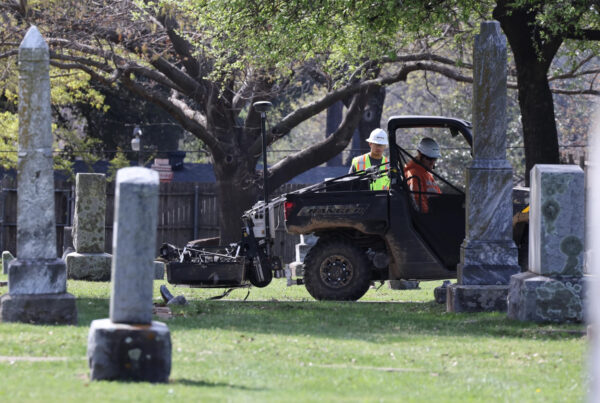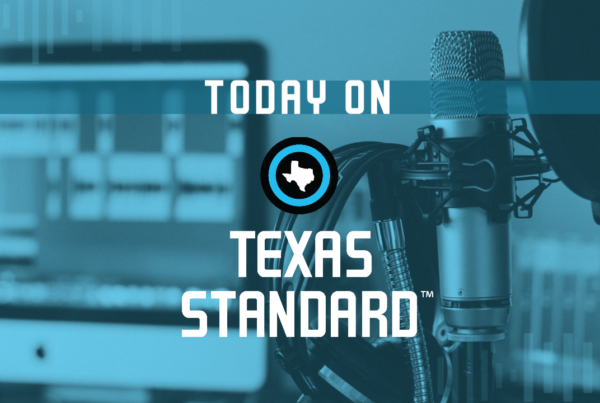It’s the story of two women: Evelyn, a young Texas woman desperate to obtain an abortion under the state’s six-week abortion ban, and Carolyn, a woman in her 40s who desperately wanted to adopt.
Their lives would intersect and be forever changed, in no small part because of the laws and rules around them.
Reporter Amber Ferguson, who captured their story for The Washington Post, spoke with the Texas Standard about meeting the women and the effect they had on each others’ lives.
This transcript has been edited lightly for clarity:
Texas Standard: Tell us first how you met these women.
Amber Ferguson: In 2022, I wrote a story about the shortage of Black sperm donors. And after that story published, I got an email from Carolyn Whiteman, who told me she couldn’t find a Black sperm donor and how she was on an adoption journey.
And so we just kind of kept in touch. And then she later told me that she adopted a baby, and I asked some questions around that, and she told me the birth mom, Evelyn, tried to have an abortion a few times, and she was unable to because of the law in Texas. And that’s how I got connected with both of them.
One of the things that stood out to me was just how desperately Evelyn had been trying to terminate her pregnancy, going as far as ordering pills from overseas, which certainly doesn’t sound safe. What did she tell you she was going through during that time?
Oh, Evelyn was depressed. She felt hopeless. She felt alone. She hid her pregnancy from her parents for 34 weeks, who she lived with. She just felt so ashamed. She was kicked out of school for the third time because her grades dropped.
And so the first conversation I had with her, she was like, “I wasn’t really doing much with my life.” She got pregnant unexpectedly, basically from a fling. She didn’t really know the father that well. And so she said “I could not parent.”
Evelyn is actually adopted herself, but she never thought about really placing her baby up for adoption because she really wanted to get an abortion.
And so she decided to put the baby up for adoption. What happened there?
Evelyn chose to do a open adoption, which means she will still have contact with the adoptive family and with the baby. And so when she was in the hospital, she gave birth, and the next day, she started interviewing families on Zoom.
She used the same adoption agency that she was actually adopted from. And something that’s kind of important to the story is that she really wanted to choose a Black family for her child to go to.
So she connected with with the woman, Carolyn Whiteman, and she chose her. They had a couple conversations that day. And after eight hours of, like, meeting Carolyn, she chose her to be the adoptive mom.
Let’s talk a little bit more about Carolyn. She originally wanted to find a sperm donor, but she decided to turn to adoption agencies, I guess. But they kept turning her down?
Carolyn, she’s in her mid-40s now, single. And she has the BRCA2 gene, which is a hereditary gene that increases your risk of ovarian and breast cancer. So she was kind of on a timeline because she knew she was going to get her ovaries and uterus removed.
And so she spent time kind of at the beginning of the pandemic looking for a Black sperm donor. But like my story in 2022 talked about, it’s basically impossible: Less than 3% of sperm donors are Black. So she couldn’t find a Black sperm donor.
And so she chose adoption. She was actually denied from a couple adoption agencies because she is single. And then three other adoption agencies wouldn’t take her because they had long waitlists.
So she was really going through this journey of trying to become a single mother by choice. And she was kind of like losing hope. And then she finally met Evelyn, and she was able to adopt her baby, who was named Olivia.
» GET MORE NEWS FROM AROUND THE STATE: Sign up for Texas Standard’s weekly newsletters
So you have Carolyn and Evelyn; let’s talk about the baby. Tell us more.
Evelyn had no prenatal care when she was pregnant. Remember, she was trying to abort Olivia basically her entire pregnancy. And so the baby was healthy. She didn’t know the gender of the baby when she gave birth.
And something that’s interesting to me, my first conversation with Evelyn, she said “I love Olivia.” Her feelings changed after she gave birth. She immediately loved that baby, even though she tried to abort the baby basically her entire pregnancy.
And I went to Texas and I visited them – I’ve been working on this story for a year – and Olivia is just such a joy. She has, like, eight teeth – it’s so weird to see like a baby with all these teeth. Carolyn has, like, over 90 bows – you know, like, head bows – for her; she coordinates all her outfits.
She is just a joy. It’s so interesting because I visited them in the fall, and she was crawling. And now she can, like, run. But she’s great.
I understand the Washington Post spoke with, like, 10 adoption agencies in states where there have been recent abortion restrictions put in place. And eight of those 10 said that they’ve seen an increase in the past year of children being put up for adoption.
Now you have these lives all intertwined, who were strangers not that long ago. Does it look like this is a pattern for the future, that we’ll see more stories like Carolyn and Evelyn’s?
Oh, I definitely think so. I would like to emphasize that my story is – I’m not saying that adoption is an alternative to abortion, but it is an increasing choice in the wake of abortion bans.
And for example, the month that Olivia was placed for adoption, Gladney, which is the adoption agency, they had the most babies placed that month than like in their history. And so that kind of spurred me, you know, going to these adoption agencies and asking.
And so there’s kind of two waves of this that they told me: When bans are put in place, they get a rush of calls from women inquiring and asking about adoption. And then you have another wave about eight or nine months later of women inquiring and placing their babies for adoption.
They all told me, you know, they were kind of surprised by this, but not really. But it’s putting like increased demands on adoption agencies because, yes, they have a lot of families who are on the waitlist to have babies. But that means like more training and just other things that are happening. That’s kind of putting a strain on the adoption, the –
Support services that come along with all of this.
Yeah, exactly. And, you know, open adoption is becoming the increasing norm, where the birth parents or a birth mom can stay in the child’s life, but it’s still really flexible, and it’s not extremely regulated. Everyone kind of does it differently.
So for Evelyn and Carolyn, they’re very close now. Evelyn was at Olivia’s first birthday party, and she was just over for Easter. And so they’re really close, but that’s not necessarily the norm.
So in the months since, what’s happened with Carolyn and Evelyn?
Evelyn actually went back to school after the birth. She got straight A’s for the first time from her community college. And she had enough credits to transfer to an HBCU in Texas.
And so she’s enjoying college life. She moved out for the first time on her own; she has a roommate. And Carolyn is just enjoying motherhood. She says it feels like a dream fulfilled for her.


